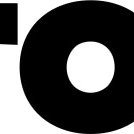The holiday shopping season officially kicked off on Black Friday, but this year, holiday sales are expected to grow at the slowest pace since 2018. While inflation has significantly slowed, compounded inflation over the years has families thinking twice about big purchases or multiple smaller purchases.
The National Retail Federation (NRF) still projects Americans will spend more this year than ever before. Shoppers are edging ever closer to that trillion-dollar mark, with estimates holiday spending will reach between $979.5 billion and $989 billion, compared with $956 billion last year. That represents 2.5% to 3.5% growth, the slowest growth in six years.
One thing out of retailers’ control is the shorter-than-usual holiday shopping season. Thanksgiving came exceptionally late in 2024, shrinking the shopping season by five days compared with 2023.
Fewer days to capitalize is bad news for retailers and small businesses already feeling the inflation crunch. Target is one of them. The red retailer’s stock price plunged 22% after reporting the latest quarterly earnings and forecasting a flat holiday season.
“Consumers tell us their budgets remain stretched and they’re shopping carefully as they work to overcome the cumulative impact of multiple years of price inflation,” CEO Brian Cornell said on a call with analysts.
Despite efforts by Target over the past six months to slash prices on thousands of items, customers aren’t expecting to pay less at Target stores. Instead, middle- and upper-income shoppers are switching to Walmart, where the world’s largest retailer is feeling jollier about the upcoming holiday spending.
Walmart told its workers it plans to win the season, and expects holiday growth to outpace NRF estimates. Analysts caution that Walmart’s success is not a sign of broader retail industry health, since Walmart is snagging inflation-fatigued customers away from other stores.
Walmart is increasingly focusing on two fronts, in-store and online. Last quarter, Walmart’s e-commerce sales jumped 22%.
If Target is chasing Walmart, Walmart is chasing Amazon. EMarketer projects Amazon will capture 42% of all U.S. online holiday sales. They forecast Walmart’s share will be around 8%.
Amazon will also look to expand on last year’s initial success with interactive advertisements during its Black Friday football broadcast.
Overall, the NRF said holiday online shopping will increase 8% to 9% this year, accounting for about 30% of all holiday spending.















































